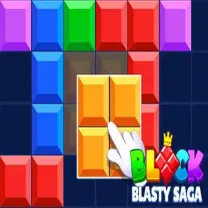Limbo is a captivating indie game that has left an indelible mark on players with its haunting atmosphere and striking art style. Developed by Playdead, this puzzle-platformer invites you into a shadowy, monochromatic world filled with mystery and danger.
An Overview of Limbo
Limbo stands out with its minimalist black-and-white visuals and eerie ambiance, creating a world that’s both mesmerizing and unsettling. Key elements include:
- Protagonist: A nameless boy who awakens in a strange forest, his identity and purpose shrouded in mystery.
- Setting: A surreal landscape blending dark forests, abandoned factories, and perilous creatures like giant spiders and deadly traps.
- Soundscape: Minimalist environmental sounds, from rustling leaves to creaking machinery, amplify the game’s lonely, tense vibe.
The Enigmatic Tale
Limbo tells its story without words, leaving players to piece together its meaning. You play as a young boy who wakes up in a foreboding forest, driven to find his missing sister. The narrative unfolds through haunting visuals and environmental storytelling, with dangers lurking at every turn. From shadowy woods to desolate industrial zones, the game’s ambiguous plot invites players to interpret the boy’s journey, evoking a profound sense of solitude and vulnerability.
Standout Features
Limbo is more than a game—it’s an artistic experience. Its defining features include:
- Striking Visuals: Black-and-white graphics with silhouette effects create a chilling yet beautiful world.
- Physics-Based Puzzles: Solve challenges by manipulating objects, pulling levers, climbing ropes, and timing movements with precision.
- Immersive Atmosphere: Subtle ambient sounds, like wind or insect chirps, heighten the sense of dread and isolation.
- Escalating Challenges: Puzzles grow increasingly complex, demanding sharp observation, logic, and quick reflexes.
- No Hand-Holding: The game offers no explicit tutorials, encouraging players to discover solutions through exploration and experimentation.
How to Play
Limbo is a 2D puzzle-platformer where you control a young boy navigating a treacherous world through movement, interaction with objects, and puzzle-solving. Here’s a detailed guide to mastering the gameplay:
- Basic Controls:
- Movement: Use the left and right arrow keys (or equivalent on your platform, e.g., joystick on consoles) to move the boy. The up arrow or jump button makes him leap over gaps or onto platforms.
- Interaction: Press and hold the action key (e.g., Ctrl on PC, or a designated button on controllers) to grab and manipulate objects like boxes, ropes, or levers.
- Running and Climbing: Combine movement with jumping to climb ledges or swing on ropes. Timing is crucial for avoiding traps or reaching higher platforms.
- Navigating the Environment:
- The game progresses linearly through a series of interconnected scenes, each presenting unique obstacles like pits, traps, or enemies.
- Observe the environment for interactive elements: boxes to push, ropes to climb, or switches to activate. For example, you might drag a crate to climb onto a higher ledge or pull a lever to open a path.
- Environmental hazards, such as falling rocks, electrified surfaces, or giant spiders, require precise movement and timing to avoid instant death.
- Solving Puzzles:
- Most levels feature physics-based puzzles. For instance, you might need to push a log to float across water or time a jump to avoid a moving sawblade.
- Puzzles often require chaining actions, like moving a box to trigger a switch while dodging a trap. Pay attention to how objects interact with each other (e.g., weight affecting platforms).
- If stuck, experiment with different interactions—try pushing, pulling, or jumping in new ways. The game encourages trial and error, with frequent checkpoints to minimize frustration.
- Dealing with Enemies and Traps:
- Enemies like giant spiders or hostile figures require creative strategies. For example, you might lure a spider into a trap or use the environment to disable it.
- Traps, such as bear traps or spiked pits, demand careful timing. Watch for patterns (e.g., swinging blades or timed arrows) to move safely.
- Some sections involve running sequences where quick reflexes are key to escaping collapsing structures or pursuing threats.
- Progressing Through the Game:
- Limbo is divided into chapters, though they flow seamlessly without explicit breaks. You’ll transition from eerie forests to industrial zones, with puzzles growing more complex.
- There’s no inventory or health bar—your survival depends on skill and wit. Death resets you to the nearest checkpoint, often just before the puzzle or obstacle.
- The game’s later stages introduce advanced mechanics, like gravity manipulation or water-based puzzles, requiring you to combine all learned skills.
Secrets to Success
Maximize your Limbo experience with these expert tips:
- Leverage Light and Shadow: Lighting often hints at puzzle solutions. Shadows of objects can reveal how to interact with the environment.
- Listen Closely: Audio cues, like the scuttle of a spider or the hum of machinery, signal approaching dangers. Headphones enhance immersion.
- Stay Patient: Complex puzzles may require multiple attempts. Take your time to analyze and experiment.
- Use Checkpoints Wisely: The game autosaves frequently, so don’t hesitate to try bold strategies without fear of losing progress.
- Hunt for Secrets: Explore thoroughly to find hidden Easter eggs, which may unlock secret levels or achievements.
Limbo is a timeless indie gem that blends artistry, challenge, and mystery into an unforgettable adventure. Its haunting world and clever puzzles will test your wits and leave you pondering its cryptic story long after the credits roll. Step into the shadows and embark on this mesmerizing journey today!
























